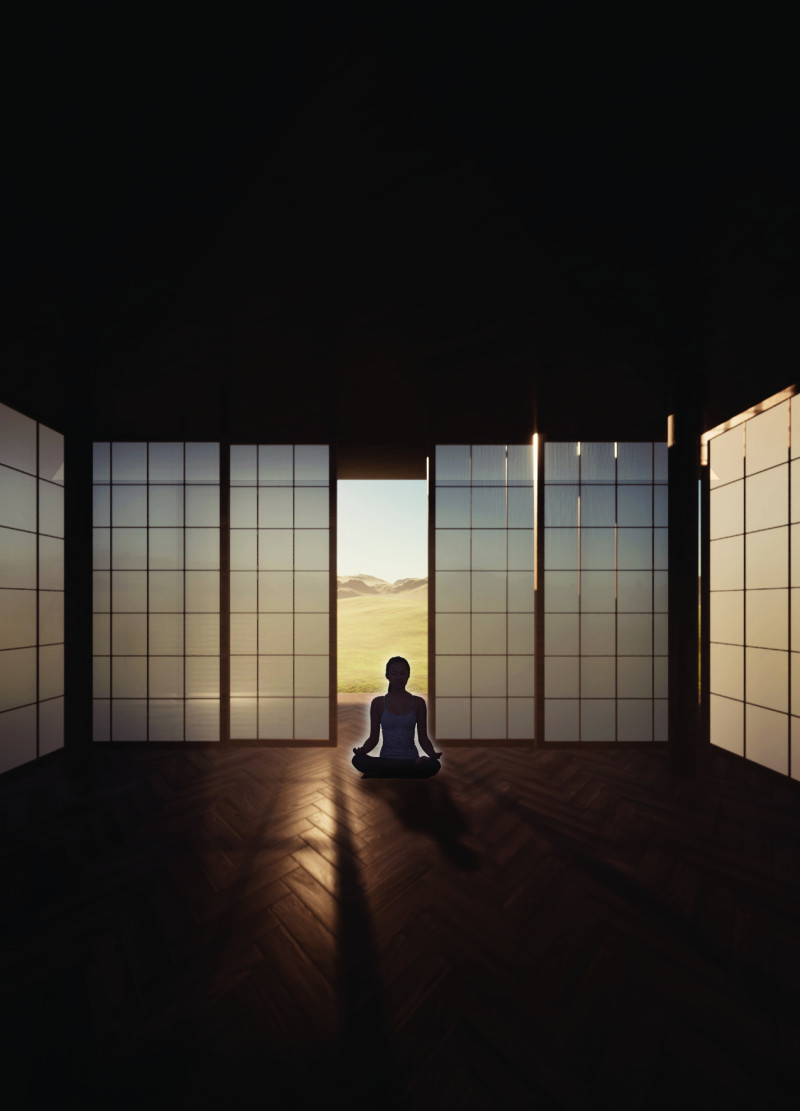5 key facts about this project
The architectural design explores the relationship between life, death, and rebirth, situated in a natural context that enhances its themes. It serves as a space for reflection, inviting users to engage with nature while fostering a sense of inner peace. The overall concept highlights the transition between different states of understanding, using both darkness and light to shape the visitor’s journey.
Concept and Experience
The design embodies the cycle of existence, emphasizing the connection between humanity and the environment. Upon entering, visitors find themselves enveloped in darkness, representing a separation from the outside world. This initial moment encourages reflection, allowing individuals to prepare for an encounter with the fundamental elements of life: water, fire, and light. Progressing through the space, visitors experience a thoughtful journey that transitions from contemplation to enlightenment.
Spatial Arrangement
Inside, the layout is carefully organized to enhance the contemplative experience. After a time spent in darkness, individuals ascend to a higher level where previously hidden views unfold. This reveals new perspectives on both the outside landscape and their inner thoughts. Climbing upward symbolizes a journey toward understanding, connecting the physical movement within the structure to the philosophical themes of rebirth and renewal.
Material Selection and Sustainability
Natural materials play a crucial role in the design, reinforcing its connection to the surrounding environment. Pine trees are utilized for various elements of the structure, while bark serves as the roof. The outer wall is composed of combined scraps, highlighting a commitment to sustainability and minimizing environmental impact. Traditional joining methods, commonly found in Buddhist architecture, are employed to ensure materials can be reclaimed and returned to the earth when needed.
Environmental Integration
The building effectively responds to its environment. The upper floor features deep eaves that control sunlight, which helps maintain a comfortable atmosphere inside. A SHOJI screen further enhances flexibility and provides excellent insulation, connecting the space to the outdoors. This focus on environmental responsiveness emphasizes the intent to harmonize with nature and create a peaceful area for self-reflection.
Overall, the design expresses the themes of life and rebirth. It presents a structure that promotes mindfulness through its thoughtful architectural elements and layouts.






















































